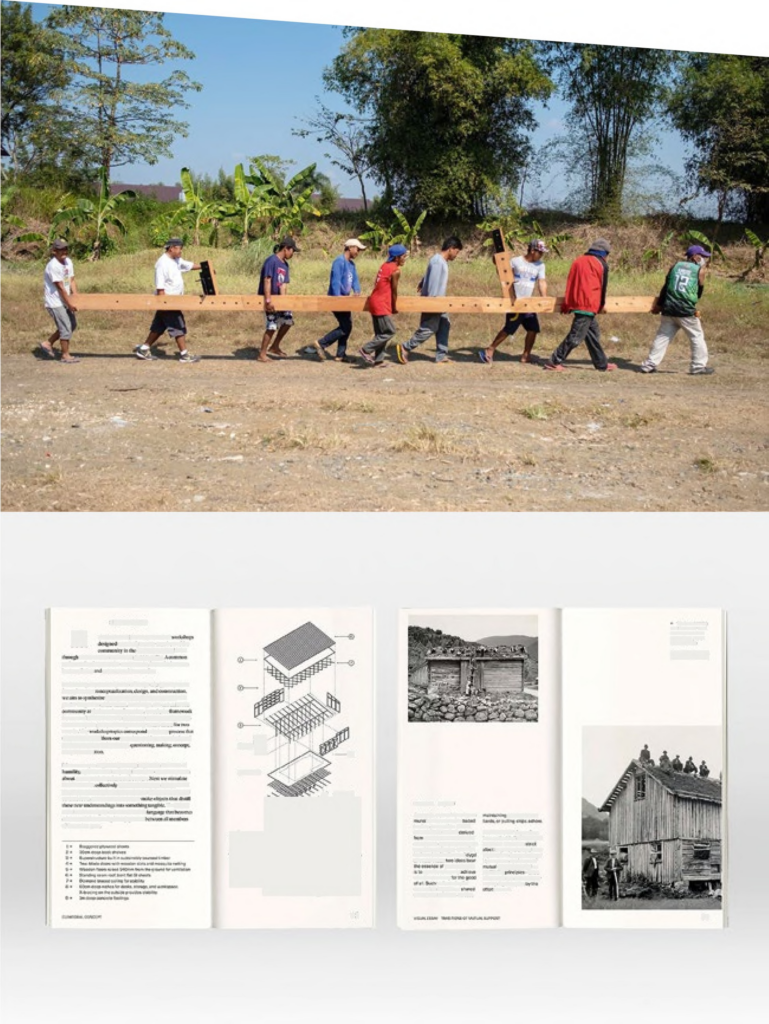ALEXANDER ERIKSSON FURUNES & SUDAR KHADKA
Alexander Eriksson Furunes born 1988 in Trondheim, Norway, where he lives and works Sudharshan V. Kahdka Jr. born 1986 in Manila, Philippines, where he lives and works
To Lift Together: Mutual Support and Collective Action
2024

Architects Alexander Eriksson Furunes and Sudarshan V. Khadka, Jr. have been working together since 2014, when the two first collaborated on Streetlight Tagpuro, a post-disaster rebuilding project in the City of Tacloban, Philippines, after Super Typhoon Haiyan. The project won awards in the Civic and Community and Small Project of the Year categories at the World Architecture Festival in 2017. Aligned through a deep commitment to the concept of mutual support, Furunes and Khadka have realized multiple projects since. Founded on participatory planning and construction, often in rural contexts, the communal structures that they facilitate are enabled by the traditions of communal work specific to each respective cultural context: from the Filipino bayanihan to the Norwegian dugnad, the Vietnamese đổi công, the Brazilian mutirão, and the Arabic majlis.
Mutual support, in the words of Furunes and Khadka, “is a mode of self-organization and collaboration for communities to build resilience and support each other through adversity, crisis, conflict, or natural disaster.” Furunes and Khadka use a dialogical method, a six-step process of learning, questioning, making, conceptualizing, designing, and building to help distil different communities’ needs for private spaces for conflict resolution and alternative learning. Activating and accompanying such collective decision-making in different cultural contexts forms the core of the architects’ practice as much as the contingencies of actual construction. Frictions that can arise in such processes are accepted as elements of creative practices that foster reciprocity and cohesion.
Invited to curate the Philippine pavilion of the 17th Venice Biennale of Architecture (2021), the pair presented Structures of Mutual Support as an example of architecture as process. The project was initially developed as a collective effort undertaken in collaboration with the Gawad Kalinga (GK) Enchanted Farm community in Angat, Bulacan in the Philippines. The dialogic method used in developing community building created a democratic space in which different perspectives were heard and considered together, while demystifying the blueprints of architectural design into exercises through which the community and the architects could embed values and meanings into the built object. The pavilion was awarded a special mention in the Golden Lion Award for the Best National Participation.
On view is documentation of the architects’ various projects and research dedicated to the theme of communal spaces, mutual support, and community building.
